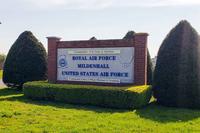Remotely-controlled weapons stations have drastically reduced the number of soldiers needed for perimeter security at an expeditionary base camp at Fort Bliss, Texas.
"Every Soldier I have assigned to securing the perimeter is one I don't have that can execute support missions," said Lt. Col. Raphael Heflin, commander, 142nd Combat Service Support Battalion, or CSSB, 1st Armored Division, in an Army press release
At a conventional combat outpost, it takes four to six soldiers doing eight- or 12-hour shifts to man one weapons system on the perimeter, he said.
Using relatively new remote control weapons systems, he said, pointing to a series of unmanned, weaponized towers at the edge of the razor wire, two soldiers inside the base camp tactical operation center can do the security work once done by 10.
The towers are fitted with a Browning M-2 50-caliber machine gun and a .338 Lapua sniper rifle.
The 142nd CSSB is among the many Army and other military service units - along with a 14-member coalition from mostly NATO nations - participating in Network Integration Evaluation 16.1, known as NIE. The evaluation runs from Sept. 25 to Oct. 8. In all, about 9,000 participants are evaluating new and emerging network solutions.
Capt. Robert Scott, officer-in-charge of the 142nd CSSB's base defense operation center, explained how the remote-control weapons system works.
The systems, including the expeditionary towers atop which they're mounted, are known as containerized weapons systems, he said.
One expeditionary tower "can be put together by six soldiers in less than an hour, with minimal training," Scott said. When it's time to pack up and leave, everything fits neatly back inside the container.
The weapons can be raised, lowered, rotated by 360-degrees and fired remotely, he said.
Operators sit inside a container with multiple large screens in front of them. To control the weapons, they use software called the Joint All Hazard Command Control System, which Scott said serves as the brains of the "Tower Hawk System."
The weapons systems are even more effective at night, Scott said.
"Anything moving at night we see long before they see us," he said, adding that "they" refers to the bad guys.










